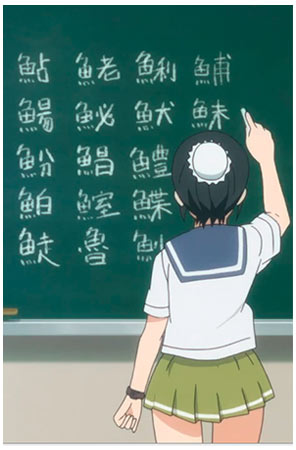The Japanese language has three writing systems to communicate the written word: hiragana, the syllable-based system used for expressing basic words and grammatical particles; katakana, a mirror of hiragana that’s used for foreign words and place names; and kanji, which expresses more complex meanings. While learning kanji seems like a daunting task to anyone who didn’t happen to grow up in a country that uses Chinese characters, it’s not nearly as bad as it looks. First, kanji are organized in logical sets called “radicals” that are all related to each other — for example, words like cloud, snow, fog and lightning/thunder all have the character for “rain” in them. The official list of “general use kanji” contains 2,136 characters, but mastering the first 1000 (which Japanese learn through the 6th grade) will cover 98% of anything you’re likely to do — I managed that in a few months by reading manga and going to Japanese karaoke restaurants every weekend. Due to the popularity of computers and cell phones, virtually no one writes kanji by hand anymore, and it’s permissible for students to focus on reading mainly, which is much easier than writing. Finally, the Japanese are good about keeping their language “clean,” and regularly remove unused kanji — for example, there are archaic characters for every type of bird and fish (all the characters below are names of fish), but these are no longer taught and no one is expected to be able to read them.

Don’t worry, kanji isn’t as hard as it looks. No, really.














